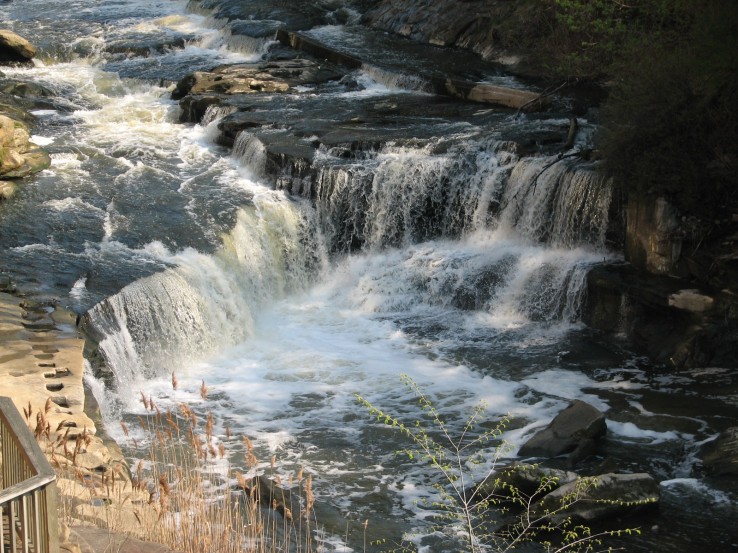On February 25, the NEOSCC Board voted unanimously to approve and endorse the Vibrant NEO 2040 Vision, Framework and Action Products. We are sharing an “Initiative A Day” so you can gain a better understanding of the vision and framework! If you would like to read all of the Initiatives, you can download them here: Recommendation and Initiatives. You can access a pdf of the entire vision chapter here. The vision chapter contains all 41 initiatives, development strategies, indicators, and matrices that identify how the recommendations, initiatives and indicators all relate.
Show your support for Vibrant NEO 2040 by adding your name to our Champions of Vibrant NEO 2040 list here.
Initiative 7.6: Develop and maintain a natural resources inventory of the region.
WHAT THIS MEANS. Natural Resource Inventories (NRIs) have emerged in recent years as best practice in environmental management. A NRI is an objective index of natural features that often spans geology, soil, water, plant communities, animal habitats, and human infrastructure. Ideally, the NRI is assembled through a process of stakeholder-driven discovery, whereby professionals work with communities in a process of collecting, integrating, and interpreting environmental data from a number of sources. Base data typically come from federal agencies like the United States Geological Survey, and sometimes from state and local sources—though the quality and quantity of such data vary widely.
The best NRIs comprise at least two phases: an initial data collection and integration effort, followed by analysis of datasets and ideally field surveys. Field surveys are an important means of verifying the validity of generalized land cover and habitat data, which are derived from satellite imagery at a coarser geographic scale than what is ideal, particularly to inform any future policy. They also enrich understanding of the distribution of ecological process and function across the landscape, a major factor in adjudicating the value of a particular landscape, and thus its suitability for different uses or states.
Whereas the initial data collection can often be performed handily by a MPO or COG, county or city, or other entity with basic geographic information system (GIS) facilities, the analysis and field verification work must be performed by technical experts. The Mid America Regional Council (MARC),Kansas City’s MPO and COG, pioneered a best practice in natural resource inventories through a partnership with local consulting firms that sought to build internal capacity and longer-term monitoring and management systems within MARC. MARC has since used the results of the NRI to educate and empower its member jurisdictions on environmental planning and stewardship issues.
WHY THIS IS IMPORTANT. Identifying significant natural resources and features—and impacting forces—is the first step in being able to effectively preserve them. The NRI approach provides a rich factual base on which to build a conversation about the ecological value of landscapes, and to develop rules to protect that value from diminishment. This conversation is not an easy one to have, but it is necessary. When done well, the process of developing a NRI can serve the important function of building relationships and trust between stakeholders so cooperation and joint action can occur, particularly important when natural features and resources cross jurisdictional boundaries. In the case of Kansas City, the process creating the NRI-built institutional relationships and collaborations that made it possible to form new watershed partnerships and action plans for green infrastructure, stormwater management, and parks/ open space management. One such partnership emerging from the Kansas City NRI, the Blue River Partnership, has evolved into its own interlocal agreement sharing costs in the implementation of watershed stabilization treatments
GETTING IT DONE. Fortunately, the Northeast Ohio region already has a solid foundation for a full natural resource inventory through datasets developed to inform the scenario planning work of Vibrant NEO 2040. This includes detailed land use and land cover maps, and ecological value indices developed from U.S. Geological Survey data. Additionally, the region’s several watershed partnerships, universities, and land trusts and conservancies possess high-quality, finely resolved datasets. The challenge will be in integrating these various source of data and engaging the interests of the parties charged with developing and maintaining environmental data on the region.
This initiative should be led by NEOSCC’s consortium members, particularly the region’s MPOs and COGs. NEOSCC can invite and convene partners in the inventory effort, utilizing its non-profit status to build good process and multi-stakeholder trust in the use of data. Partners invited into a NRI should include: soil and water conservation districts, Metroparks and other parks districts, sewer districts, watershed partnerships, planning departments and commissions, the US Army Corps of Engineers, the Cuyahoga Valley National Park, and state and federal EPAs. The U.S. EPA has supported natural resource inventories in the past through grants and technical assistance; the Ohio Department of Natural Resources is also a source of potential support for development of a natural resource inventory.
| Lead | Metropolitan Planning Organizations, Councils of Governments; Universities; Nonprofit Organizations |
| Target Community | Strategic investment areas, asset risk areas, cost risk areas |
| Implementation Complexity | Moderate |
These recommendations, initiatives, and products, are not one-size-fits all and some aspects of the initiatives won’t be applicable everywhere in the 12-county region. The Vibrant NEO 2040 Vision, Framework and Products are intended inspire and guide decision-making at the Metropolitan Planning Organization (MPO), Council of Government, and local levels to ensure that land use, transportation, and environmental considerations are simultaneously addressed by their processes. Ultimately, the implementation of Vibrant NEO 2040 is up to Northeast Ohio’s communities and residents. But regardless of the applicability of each initiative to any particular part of the region, the goal for each community within the Vision is the same: stability, prosperity, and a high quality of life for all of its residents.

